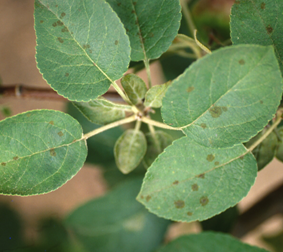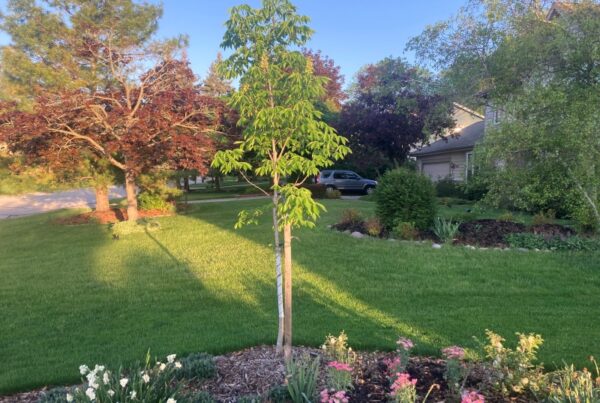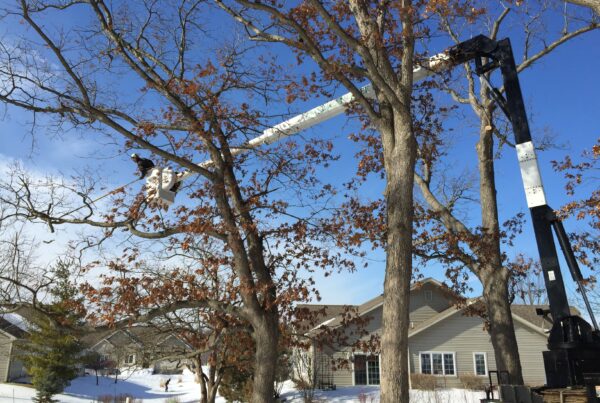Just how wet was it in Wisconsin last year? Nearly 42 inches of rain fell across the state in 2019, the highest amount since 1895 when the first weather data was recorded.
This means a lot of trees are suffering from fungal diseases.
Among coniferous species, the Colorado Blue spruce has been especially hard hit by Rhizosphaera needle cast. This fungus thrives in wet conditions and takes hold of the tree, causing needle loss. The infection is first noticed towards the bottom of the tree where there is little sun and wind to dry it out.
Common symptoms include:
- Needles changing color, first green, then violet and brown
- Loss starts at the bottom of the tree and moves upward
- Needles display a black, sooty texture
If you own an apple or crabapple tree, and you see it losing leaves by mid-summer, it may suffer from scab disease. Ornamental and fruit trees in the rose family are often affected. Small, circular brown lesions first appear on the upper side of leaves. They expand and blend together, causing defoliation. If heavy defoliation occurs in consecutive years, fungicide applications are recommended.
Anthracnose is another fungal disease that is commonly seen on hardwoods like oak and maple. You may notice patches of brown, dead leaf tissue on the tree. As the damage advances, leaves will curl, shrivel up and drop to the ground. That will leave your trees a bit thin in the crown, but the trees will generate new leaves and recover by early summer.
Consider a consultation for possible fungal issues with ATE. We have certified arborists on staff to diagnose and treat your trees.




